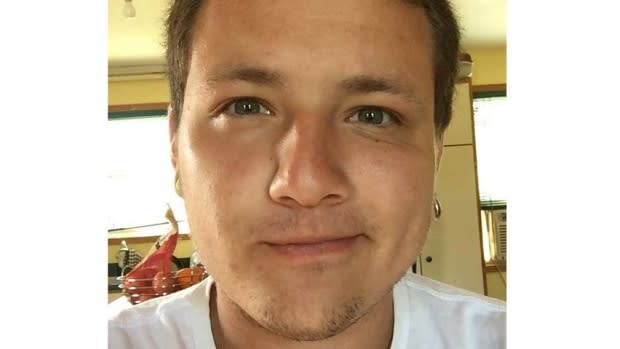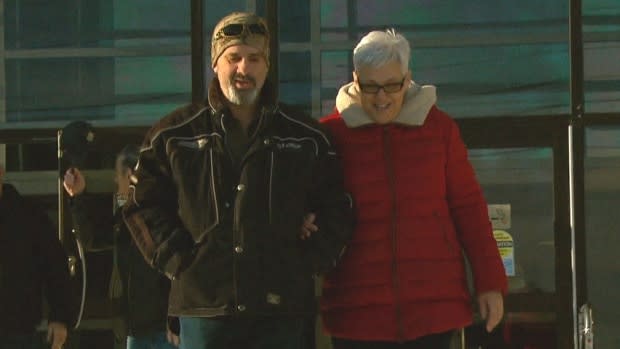Judge reserves decision in fatal hit-and-run trial of Maurice Johnson
There are too many unanswered questions to find Maurice Johnson guilty in connection with the hit-and-run death of Brady Francis, his defence lawyer told the Moncton Court of Queen's Bench during closing arguments Friday.
Gilles Lemieux alleged the RCMP ignored evidence that didn't fit their theory and used tactics to pressure his client into a confession, but Johnson maintained he believed he had hit a deer.
The Crown failed to prove its case beyond a reasonable doubt, argued Lemieux.
Johnson, 57, of Saint-Charles, has pleaded not guilty to failing to stop at the scene of an accident that caused a person's death.
Francis was 22 when he was struck and killed on Feb. 24, 2018, at around 9:40 p.m., while waiting for a drive on Saint-Charles South Road.
Crown prosecutor Pierre Gionet countered that despite the case being based on circumstantial evidence, it had to be Johnson's truck that struck and killed Francis.
Gionet replayed security video of the four vehicles that drove past Francis during the timeframe he was hit.
He reminded the court the first two drivers testified they saw Francis walking along the road, the third vehicle was a light-coloured truck — which Gionet contends was Johnson's, and the fourth driver testified to seeing a person on the ground.
No one else mistook Francis for a deer, said Gionet.

Experts confirmed the damage to the accused's truck was consistent with a collision with a pedestrian, he added.
Justice Denise LeBlanc will deliver her decision on April 28.
Lemieux suggested to the court the only possible decision is not guilty, as Johnson and about 10 of his supporters looked on.
How can you decide beyond a reasonable doubt that Johnson intentionally hit or intentionally left the scene knowing that he had hit a person?, Lemieux asked the judge in French.
The position of Francis's body was not consistent with the damage to Johnson's truck, the defence lawyer said.
The blood found on the truck did not match Francis's DNA, he said.
And glass fragments found in Francis's clothing could have come from multiple sources, including his cellphone, the truck or the road, said Lemieux.
About 20 members of the Francis family and people from the Elsipogtog community followed the French proceedings from an adjacent courtroom, where a volunteer has been providing translation.
No one offered any comments outside the courthouse.
Closing arguments were initially scheduled to be presented Feb. 7, but the proceeding was postponed due to inclement weather.
The Crown's case
The Crown called 32 witnesses.
Several of them testified that a broken GMC logo was found on the road close to where Francis was found.
RCMP Const. Ricky LeBlond was one of the officers who seized Johnson's truck the day after Francis was killed.
He testified that Johnson's truck was missing part of its GMC logo and there was damage on the passenger side.
The court heard the damage was consistent with a collision with a pedestrian.
Cpl. Richard Belliveau, a forensic identification specialist based in Moncton, told the court that, in his opinion, the black pieces of plastic found at the scene came from Johnson's truck.
He said, based on his analysis, the two pieces were a match.
Inconsistencies in the evidence
The defence called three witnesses to raise inconsistencies in the evidence.
Kimberly Kenny, a civilian member of the RCMP with a PhD in analytical chemistry, examined some of the clothes that Francis was wearing the night he died.
She told the court the tests found no link between Johnson's truck and Francis's body or the clothing he was wearing.
No blood, tissue, hair or even fibres from his clothing were found.
Collision reconstructionist Michael Reade dwelled on another mystery.
He told the court if a pedestrian was struck on the passenger side, as the damage to Johnson's truck shows, the body would either go straight forward or to the right — toward the ditch in this case.
He said Francis's body was found on the west-bound lane, on the opposite side of where the damage suggests it should be.
"[The] evidence just does not match that scenario," he told the court.
Accused did not testify
Johnson did not testify in his own defence. His only account of what happened the night of Feb. 24, 2018, was a four-hour videotaped interview with the RCMP three weeks after Francis was killed.
The court watched as Johnson was interviewed by Cpl. Nicholas Potvin at the RCMP detachment in Richibucto.
Johnson said he and his wife were talking while he drove that night and he turned his head to look at her for a moment. When he turned back, there was a deer in front of his truck and he didn't have time to brake, he said.

He stopped and looked back, but didn't see anything, so he thought the animal had run off and they kept going.
"If I thought it had been a person, I would have stopped," he said. "I saw a deer."
Beyond a reasonable doubt
Wayne MacKay, a law professor at Dalhousie University in Halifax, said the Crown has to demonstrate Johnson was involved in the accident and knowingly left the scene of an injury.
"And that's always a pretty difficult case with strictly circumstantial evidence," he said.
MacKay said the hardest part of the Crown's case will be to show that Johnson intended to leave the scene,
"Obviously the consequences for Mr. Johnson are very large if this conviction is proven," he said.
"The beyond reasonable doubt standard is always a difficult standard, as it should be because we don't want to have innocent people convicted."
MacKay said in cases with circumstantial evidence, it can be complicated but "that doesn't mean it can't be done."


